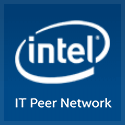I have always been a believer in the power of a professional network. I am a member of several, both on-line and in-person. However, this power was never clearer to me than it was last week. Friday was the culmination of months of planning for the inaugural Sustain the White River Excursion. This “experiential workshop” was designed to raise awareness about the impacts that development has on the river and its watershed. Throughout a 10.5 mile canoe trip, five local experts (or as we called them, “Guides”) met us along the river to describe various impacts, such as storm water, waste water, fresh water filtration, residential impacts and even the history of settlements along the river. You can read more specifics about the event by going to the News & Events tab on our website at www.ConfluenceDynamics.Net.
What really got me thinking though was watching 34 area professionals (described by one guide, as a real all-star team) standing on the beach after canoeing 10.5 miles over seven hours and exchanging business cards and contact information. Relationships were forged over the course of the day that I believe will have a positive impact on the community and the river.
But, as I said, that was the culmination. The idea for this workshop occurred to me while sitting through various lectures held by the US Green Building Council’s Indiana Chapter. Several of these presentations discussed the impacts of development on the watershed. During one of these, I thought, “wouldn’t it be cool to learn about these impacts, but from the perspective of the river…a river school of sorts?” I really wasn’t sure if anyone else would think it was cool, but being a long time River Rat I couldn’t think of a better way to see and feel the impacts.
Several weeks later, during lunch with a former colleague (read “in-person networking”), I mentioned the idea to her. She thought it was a great idea and encouraged me to plan and host the event. We went on to discuss other topics and since I was just launching a new business, she mentioned several people I needed to meet and to add to my network. A few hours later I had an e-introduction to Jennifer Roberts of Elements Engineering. Jennifer and I met over coffee and while she was very interested in my new business venture, what she really wanted to hear about was the “river school”. I guess word of my idea was spreading!
Fast forward a couple of months, I attended the Green Building Power Breakfast sponsored by the Indianapolis Business Journal and happened to sit at a table with Ken Remenschneider of Remenschneider Associates. Coincidentally, I had actually attended an event at Ken’s home several months prior, but had not met Ken. We got quite a laugh when I exclaimed, “I’ve been in your house!” Throughout the breakfast we realized that our networks intersected as he has done business with Jennifer for years. We agreed to meet in a few weeks so that I could explain more about my new business.
By the time we met for lunch, he had obviously spoken with Jennifer because he brought a map of Indiana so we could talk about the River School and weigh the pros and cons of various rivers on which to conduct the event. I guess I was committed now!
Ken, Jennifer, my wife Carmen and I began the planning process. I wanted to flush out the ideas and formalize the aspects of the River School. I also wanted their input as to who we should invite. Again, the power of networking, between my network and each of their networks we sent out invitations to what was now called the Sustain the White River Excursion. We had agreed to limit this first event to 30 people and within days we had all the seats filled…and then some!
One of the segments of the Excursion that I felt was key was to engage Conner Prairie Historical Park in some way. The Park sits on the banks of the White River and would be about our half way point. Being a history buff, I wanted to reach out to them, but didn’t really have any contacts in their organization. I turned to LinkedIn. There I found Ken Bubp, COO of Conner Prairie. Ken and I had actually met about three years ago at a Park board meeting. I noticed from Ken’s profile that he had recently joined the Green Group on LinkedIn. That was my in! Using LinkedIn, I sent Ken a note that I hoped would pique his curiosity about our event. Within a few weeks, Jennifer and I met Ken Bubp and Nancy Stark in the conference room at Conner Prairie. Not only were they supportive of the idea, they embraced the idea! An on-line network at work!
As it turned out, all of the Guides came through networking: Tim Stottlemeyer from the City of Noblesville, Katie Hodgdon of River Watch, Jim Willaert from Conner Prairie, Lou Ann Baker representing Veolia Water and Shaena Smith from Hamilton County SWCD.
One final example for today, Jennifer continues to e-introduce me and my business. One such e-introduction, led to a meeting with Kevin McKinney, publisher of NUVO a local newspaper. During the meeting with Kevin I explained about the Excursion. Come to find out, he was not only a River Rat as well; he was neighbors with Ken Remenschneider! He decided to join the event and asked if he could bring Rae Schnapp from the Hoosier Environmental Council…another organization that I wanted to reach out to but did not have a connection!
So there were all were. 34 professionals representing 29 different companies, organizations and municipalities, standing next to the river exchanging business cards…who needs golf for doing business deals when you have a river?
P.S. If you want to link up on LinkedIn send me an invitation to connect, I am always looking to expand my network! Who knows, next time, even you might be paddling a canoe during a workshop!



